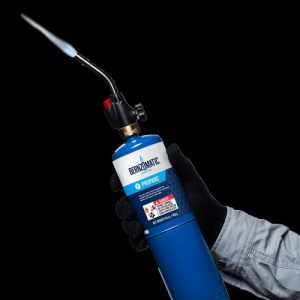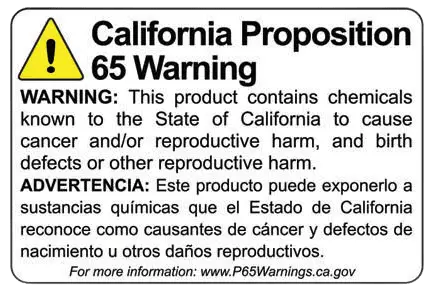 Blowtorches have been invented in the late 19th century and have since become both cool and useful to use in different applications ranging all the way from welding and cutting metal, lighting up cigars, melting jewelry, and even cooking! They work on the basis of an oxygen and fuel gas mix, fed into a torch head from cylinders through two flexible hoses.
Blowtorches have been invented in the late 19th century and have since become both cool and useful to use in different applications ranging all the way from welding and cutting metal, lighting up cigars, melting jewelry, and even cooking! They work on the basis of an oxygen and fuel gas mix, fed into a torch head from cylinders through two flexible hoses.
The invention of the blowtorch in the late 19th century thrilled pyromaniacs everywhere and revolutionized the process of welding. The earliest known evidence of welding, or connecting metal pieces by applying heat, dates back more than 3,000 years. By the Middle Ages, the process was significantly developed, and blacksmithing was a common profession. A blowtorch made it easy to cut and weld metal more precisely by focusing a high temperature on a small point.
Components
First of all, in order to make a blowtorch work, one needs fuel – usually acetylene, but also butane and propane – and an oxidizer – pure oxygen. The oxidizer and the reducer are provided by two cylinders, which keep the two gases under pressure, in a liquid phase. The cylinders are equipped with pressure regulators, to control the pressure in the cylinder and that of the gas inside the feeding hoses.
The high-pressure regulators read the gas pressure in the tank, while the low-pressure regulator measures the pressure for delivery to the hose and torch. The hoses are connected to the cylinders and the torch and are usually made out of rubber, in order to give strength and flexibility. Their colors are coded so that they are not to be confused with each other.
The torch head is equipped with two needle valves, which are used to regulate the flow of fuel and oxygen gas to the tip of the torch head, where the mix will burn. Last but not least, an igniter is required in order to light up the torch. Igniters are of gas stove type and lighting the torch with any other type of light sources such as lighters and matches is highly forbidden, due to the risk of getting burned by the high-temperature flame.
Additional Components
For safety reasons, check valves and flashback arrestors must be used, and although they are found in all standard blowtorches, they can also be bought separately.
Check valves have the role of preventing gas from flowing back through the hose or cylinder, meaning that while functioning correctly, the pressure in the hose must always be greater than that in the torch head. They are usually mounted directly to the regulators and the torch head so that in case the pressure in the torch head exceeds that in the hose, gas flow is cut.
The flashback arrestor, on the other hand, has the role of flame barrier, allowing the flow of gas but not that of the flame.
Fuel
As I said earlier, blow torches may function with a variety of gas fuels, either acetylene, MAPP, butane, or propane. Usually, highly combustible gases are used so that high temperatures are obtained. For example, acetylene blow torches are able to produce a flame with a temperature ranging between 2760 degrees to 3316 degrees Celsius. Oxyacetylene produces the hottest flame than any other combustible gas mix.
While using pure oxygen, the temperature of the flame can be boosted by another 538 degrees Celsius in the case of acetylene and by 815 degrees in the case of MAPP flammable gas.
Lighting a Blowtorch
Lighting a blowtorch may seem intimidating to most of us, however, it is merely a sequence of logical steps which can be learned in less than one minute.
Start with the fuel! First, you have to turn the acetylene pressure regulator in order to set the working pressure, after which the acetylene cylinder is opened slowly to half-turn. The acetylene needle on the blow torch head is adjusted to the working pressure, then closed again.
The same process is available for oxygen as well! After completing these steps, check the blow torch for any leaks. Now, you can start the actual lighting process. Again, you start with the fuel. Open the acetylene needle on the blowtorch head then light it up with the spark igniter. As the black smoke clears, you can slowly open the oxygen needle valve on the torch head, until the volume of acetylene is matched by that of oxygen – although it is not necessarily requested.
Switching Off
If you thought lighting a blowtorch is a simple task, then closing it will be a piece of cake. First, the acetylene needle valve is closed, then the oxygen. Both acetylene and oxygen cylinder valves must be closed, then both needles on the blow torch head are opened to release the remnant gases inside the hose.


